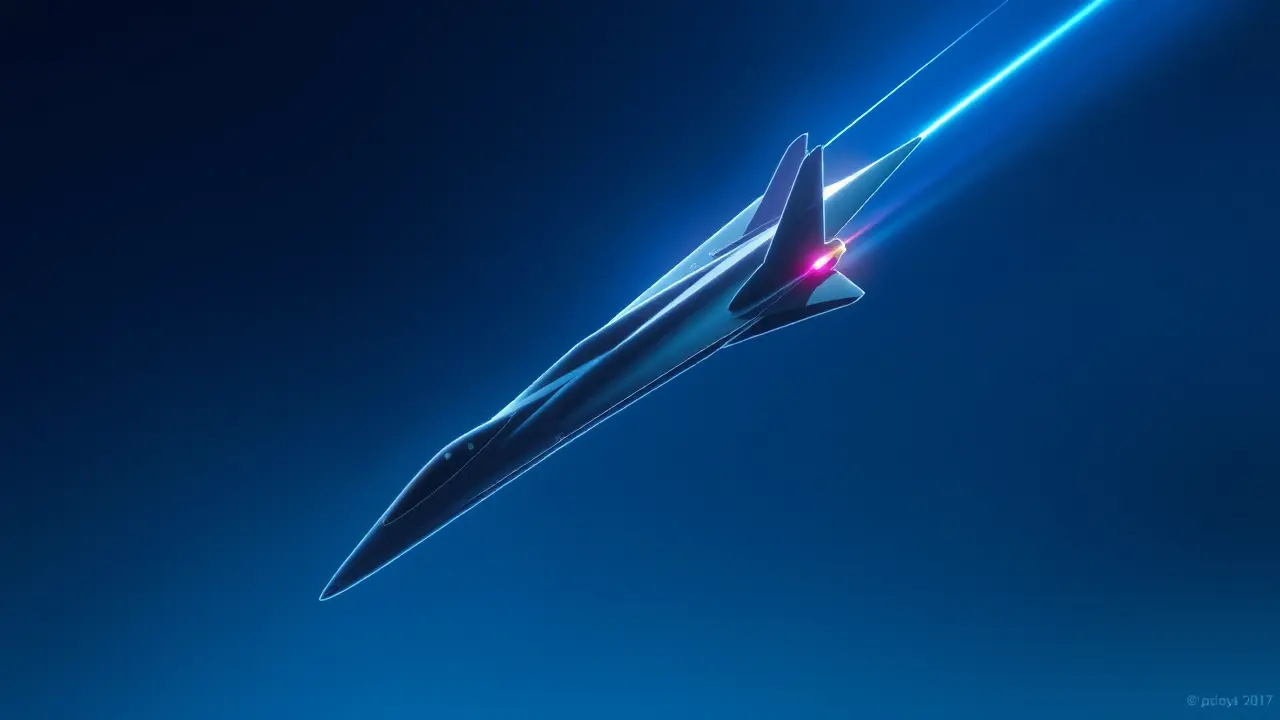
Sciencespace & astronomyNASA Missions
NASA's X-59 Supersonic Jet Completes First Flight.
TH
Thomas Green
24 hours ago7 min read
The sky above the California desert, a canvas so often painted with the contrails of ambition, was given a new masterpiece as NASA and Lockheed Martin’s X-59 QueSST (Quiet SuperSonic Technology) aircraft completed its maiden flight, a silent herald for a sonic revolution. This isn't merely another jet; it's a meticulously crafted key designed to unlock a door slammed shut for over half a century—the door to civilian supersonic flight over land.The core of this breakthrough lies in its radical anatomy. Unlike the Concorde or military fighters that produced deafening sonic booms, the X-59’s design is a symphony of aeronautical subtlety.Its needle-like fuselage, stretching over 99 feet, is so elongated that the pilot sits nearly a third of the way back, relying not on a forward-facing windshield but on an advanced eXternal Vision System, a suite of high-resolution cameras and screens that creates a synthetic view of the world ahead. This bizarre, almost alien configuration is purposeful, preventing the coalescence of shockwaves from the nose, wings, and tail into a single, ground-shaking boom.Instead, the aircraft is engineered to disperse these pressure waves, reducing the characteristic sonic boom to what engineers hope will be a mere 'sonic thump,' a gentle closing of a car door heard on the ground below. The implications are cosmic.Since the FAA’s ban on overland supersonic flights in 1973, commercial speed has been trapped in a subsonic stasis. The Concorde, for all its glamour, was a prisoner of the oceans, its economic model crippled by its inability to fly lucrative overland routes.The X-59 directly confronts this legacy. The data gathered from its upcoming Phase 2 flights over selected U.S. communities will be presented to national and international regulators, providing the scientific bedrock needed to rewrite the rules of the sky.This is about more than just shaving hours off a transcontinental flight; it's about re-establishing America's, and indeed humanity's, foothold in the high-speed frontier, a vision that echoes the Apollo-era audacity of reaching for the next horizon. Think of it as the difference between the explosive crack of lightning and the distant rumble of thunder—the X-59 aims to be the thunder, a manageable, socially acceptable consequence of breaking the sound barrier.The path forward is not without its own turbulence, of course. Beyond regulatory approval lies the immense challenge of scaling this technology into an economically viable, certifiably safe, and environmentally sustainable airliner.Can the 'sonic thump' be made consistent across different atmospheric conditions? Can the complex composite structures and unique flight systems be mass-produced reliably? And in an era increasingly conscious of its carbon footprint, how does a new generation of supersonic travel reconcile its inherent fuel demands with the imperative for greener aviation? These are the next-generation questions the X-59 forces us to ask. Yet, the successful first flight stands as a monumental proof-of-concept, a tangible signal that the dream of quiet supersonic travel is no longer the stuff of science fiction.It is a testament to persistent, long-term research and public-private partnership, a project that has navigated budgetary debates and technical dead-ends to finally take wing. In that sense, the X-59 is more than an aircraft; it is a symbol of a renewed willingness to tackle grand engineering challenges, a precursor to a future where the continents are drawn closer together, not by magic, but by the quiet application of human ingenuity, pushing the envelope once more.
#featured
#NASA
#X-59
#supersonic jet
#test flight
#quiet boom
#Lockheed Martin
#commercial travel
Stay Informed. Act Smarter.
Get weekly highlights, major headlines, and expert insights — then put your knowledge to work in our live prediction markets.
Related News
© 2025 Outpoll Service LTD. All rights reserved.
